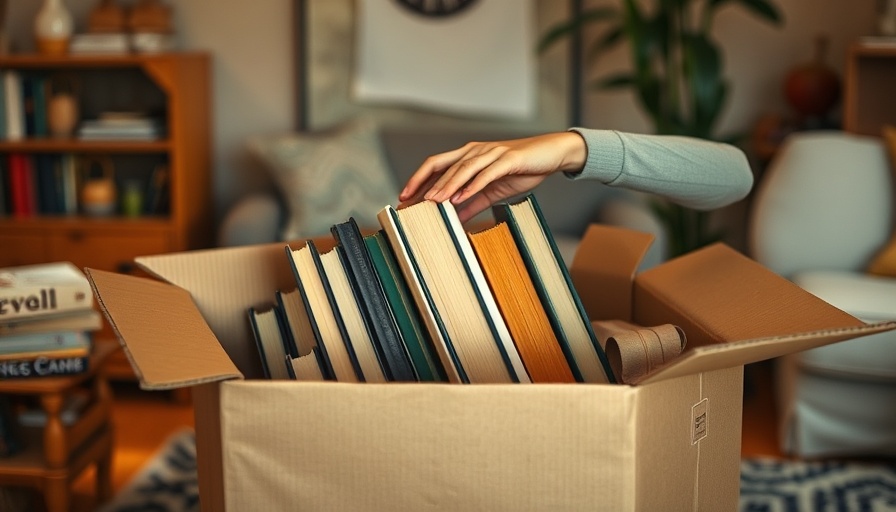
Mastering the Art of Packing Books When Moving
For avid readers and bibliophiles, moving can be both thrilling and daunting, especially when it comes to packing your treasured book collection. Books may appear straightforward to pack, but they can become a significant burden due to their weight, fragility, and the emotions attached to them. Whether you live in a cozy apartment in Seattle, the vibrant city life of Austin, or the bustling streets of Denver, knowing the best strategies to pack books for moving will ease your transition considerably.
Begin With Organization: Sort Through Your Collection
Before pulling out packing boxes, take a moment to sort through your books. Interior designer Nomita Joshi Gupta emphasizes the importance of decluttering your collection during a move. Classifying your volumes into categories not only lightens your load but also makes unpacking a breeze once you settle into your new space. Consider creating sections for keepers, potential donations, or sale items. Local libraries and schools often appreciate contributions, giving your printed companions a second life while clearing your shelves.
Gather Essential Packing Materials
After sorting your books, it's time to gather packing supplies. To maintain the safety of your collection, collect:
- Sturdy boxes: Small and durable containers ensure that you don't create weighty burdens.
- Packing tape: Secure your boxes tightly to prevent any accidents.
- Bubble wrap or packing paper: This is invaluable for your delicate or high-value books.
- Soft items: Use old t-shirts or towels to provide additional cushioning for your rarest finds.
- Markers and scissors: These tools will aid in labeling and cutting your materials effectively.
- Stretch wrap: Protect sealed boxes from dust and potential damage during transit.
Optimal Box Selection: Avoiding Common Pitfalls
Using large boxes for books is a frequent misstep. John Worden of XYZ Storage in Houston cautions against this mistake, as a box stuffed with heavy books can quickly become unmanageable. Instead, opt for smaller boxes, which are easier to lift and transport. Moreover, when packing, alternate between heavier and lighter books to maintain balance. Consider protective wrappings, especially for fragile titles and irreplaceable volumes that deserve extra care.
The Hidden Value of Donating and Selling Books
As you prepare to move, reflect on the books you should keep versus those better suited for donation or sale. This not only alleviates stress during your move but also allows your literary treasures to benefit others. Local charities, libraries, or community centers are excellent options for donations, and for books of real value, consider selling through online platforms or a local used bookstore. This way, your beloved books continue their journey and possess new stories to inspire.
Strategic Packing Techniques: Tips from the Experts
Once you've sorted and gathered your materials, how you pack the books will play a crucial role in ensuring their safe arrival. Some expert techniques include:
- Limit the weight: Aim to fill boxes to no more than 20-30 pounds to avoid injury.
- Label your boxes: Clear labeling allows for efficient unpacking and helps movers handle your belongings with care.
- Positioning: Place books standing up or flat based on their size. Flat packing may create more stability for larger books, while upright packing saves space.
Following Through: Unpacking and Settling In
After arriving at your new home, the final stage involves unpacking. Start by setting up your bookshelf with ease, using the organization from your packing phase. Keeping books categorized will help in arranging your library seamlessly. By investing the initial time in packing carefully, you’ll save significant effort in setting things up after the move.
Conclusion: Embrace the Change
Relocating your book collection may seem challenging, but with a careful strategy and a little effort, you can ensure your books arrive safely and ready for a new chapter in your life. Remember that each book is not just a physical product; it's a representation of thoughts, adventures, and potential future inspiration. Now, as you embrace the next stage of your life, take heart; you’ll have those literary companions by your side.
As you prepare for your next move, consider taking your next step in real estate ventures. Discover homes for sale and apartments for rent on leading sites like Zillow, Trulia, and Redfin to maximize your property search. Whatever your next chapter looks like, you're a step closer to shaping it.
 Add Row
Add Row  Add
Add 




Write A Comment